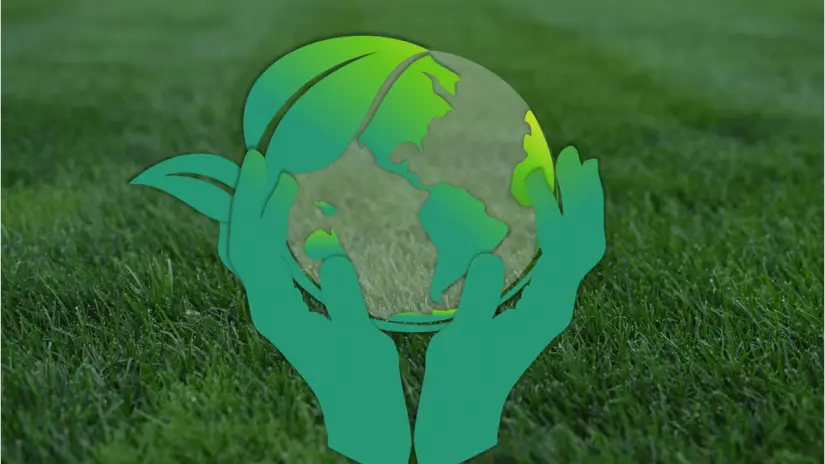
We all love the way lush green lawns beautify our communities. Homeowners typically appreciate the benefits of a healthy lawn, such as the boost to curb appeal and property values. But did you know that a healthy lawn also provides significant environmental benefits to our communities and our world in multiple surprising ways?
Do Lawns Have A Purpose?
Lawns do have a purpose. They originated in the 17th-century landscapes of French and English manors, where the nobility used them to signal their status. A lawn was a sign of such wealth that premium land could be put to ornamental and recreational purposes rather than growing crops.
In the 19th century, with the advent of the mechanical lawn mower, Americans adopted the lawn as their own source of pride. A well-kept lawn became a symbol of order and civility. Today, a healthy lawn boosts property values, serving as a living welcome mat to the home.
The Ecological Role of Grass
Did you know that an astonishing 70% of all crops grown are grasses? With over 8,000 varieties, grasses include vital staples like wheat, rice, oats, and barley. Beyond these grains, grass plays a crucial role in supporting life on our planet, even for non-human diets. As primary producers, grasses use photosynthesis to create their own food from sunlight, water, and soil nutrients. This process not only sustains the grass itself but also provides a fundamental food source for herbivores, ranging from grasshoppers to elephants.
Because grass grows so quickly, it supports immense herds of bison, caribou, wildebeest, and zebra, as well as domestic livestock. In addition to serving as a vital food source, healthy grass produces oxygen, stores carbon in its biomass, recycles nutrients, prevents erosion, and provides essential habitats for wildlife.
Benefits of Maintaining a Healthy Lawn
Beyond the benefits of wild grasses and crops to the ecosystem, further environmental benefits of a healthy lawn abound.
Erosion Control: Healthy Lawn, No Soil Loss
A healthy lawn is the best defense against soil erosion. Fun fact: Under the right conditions, one grass plant can grow up to 300 miles of roots. While grassroots hold soil in place, grass blades protect topsoil from erosion caused by wind and rain. In addition, healthy, thick lawns reduce runoff, helping to keep excessive pollutants from nearby roads from flowing into streams and storm sewers.
Water Purification: Your Lawn's Natural Filter
Studies show that the increase in impenetrable surfaces like concrete sidewalks, asphalt roads, and parking lots contributes to a severe decline in water quality. Increased pollutant-laden runoff, decreased groundwater recharge, and higher water temperatures combine to seriously damage the water table and the environment. Healthy lawns provide critical filtration. While the root zone filters out environmental contaminants, microbes in the soil break chemicals, rendering them harmless. Water passing through this natural filtration system contributes to groundwater recharge, replenishes the water table, and has been found to have less acidity than rainwater.
Soil Structure: Healthy Grass Prevents Water Runoff
Healthy lawns produce a network of robust roots that break up compacted soils, improving water absorption and ensuring water filtration through the soil. Rather than allowing rainfall to pick up pollutants while shunting it to drains like concrete, grass blades, grass roots, and looser soil capture the excess water, running it through the planet’s filtration system.
Oxygen Production: Breathe Easier with Healthy Grass
Most people don't think of their lawns as oxygen producers, but that is what they are. During photosynthesis, they absorb carbon dioxide and release fresh oxygen into the air. In fact, a 2,500-square-foot area of healthy turf can produce enough oxygen for a family of four.
Air Quality: Your Lawn Cleans the Air
With the amount of carbon-based fuels burned in the U.S., air quality remains a significant concern. Plants clean the air by absorbing air pollutants through their leaves. Grass blades also trap about 12 million tons of dust, dirt, and smoke in their leaves annually, keeping them out of the atmosphere. After these particles get trapped, water washes them through the soil, where microbes break them down.
Temperature Control: Beat the Heat with American Grass
Have you ever wondered why it feels so much cooler in rural areas than in the city? Cities are loaded with asphalt, which absorbs the sun’s heat, and concrete, which reflects it back to passersby. This is known as the urban heat island effect. Healthy lawns, like trees, shrubs, and other vegetation, take the sun’s heat and convert it into new plant growth, cooling the surrounding air. So, a home surrounded by healthy grass can help keep your home cooler than one surrounded by concrete, and many lawns can cool the community.
Maintaining a healthy lawn is one of the simplest ways you can help combat climate change.
Noise Abatement: Quiet Down with Your Lawn
Increasing noise pollution has become a frequent problem, especially in urban areas and along roadways. All that noise isn’t just an irritant; it can compromise your health. According to the World Health Organization, noises above 60 decibels can increase your risk of heart disease. Noise levels are affected by the rigidity of a surface it's traveling over. The harder the surface, the more the sound will bounce off of it. Conversely, the softer the surface, the more it can absorb sound. Grass's naturally soft surface makes a healthy lawn an excellent sound absorber and can rescue noise levels as much as 8-10 decibels.
Grow a Sustainable Lawn: Eco-Friendly Lawn Tips
There are many simple ways to improve your lawn's sustainability and its effect on the environment.
- Choose a grass type suited to your region. Using a grass that isn't meant for your region will require more effort and resources than if it were planted in the proper region and climate zone.
- Water appropriately. Less frequent and deeper watering promotes deeper root growth for a healthier lawn.
- Mow high. For a healthier lawn, set your mower to cut between 3.5 and 4 inches. Mowing too short impairs the grass's photosynthesis process.
- Leave your grass clippings on the lawn. Grass clippings are a free natural fertilizer for your lawn. And, as the saying goes, "Waste not, want not!"
A thick, lush lawn is a proven way to improve your home, community, and environment. For help with proper lawn fertilization, lean on the experts at Lawn Pride®. We know what your lawn needs to get healthy and stay that way.
Find My Local Lawn Pride
A healthy lawn is a joy to behold and offers several environmental benefits. Trust the experts at Lawn Pride for the treatments and guidance to bring out the best in your grass. We customize our lawn care services to meet your lawn’s specific needs and growing conditions. Contact your local Lawn Pride for a free estimate. We look forward to giving you the lawn of your dreams.
Need it Done Right?
When you hire Lawn Pride, we show up on time, professionally uniformed, and ready to work quickly and efficiently. We treat your property with the respect it deserves. You can count on being pleased with our work because the Neighborly Done Right Promise® backs everything we do. The job isn’t done until it’s done right. Contact us today!
